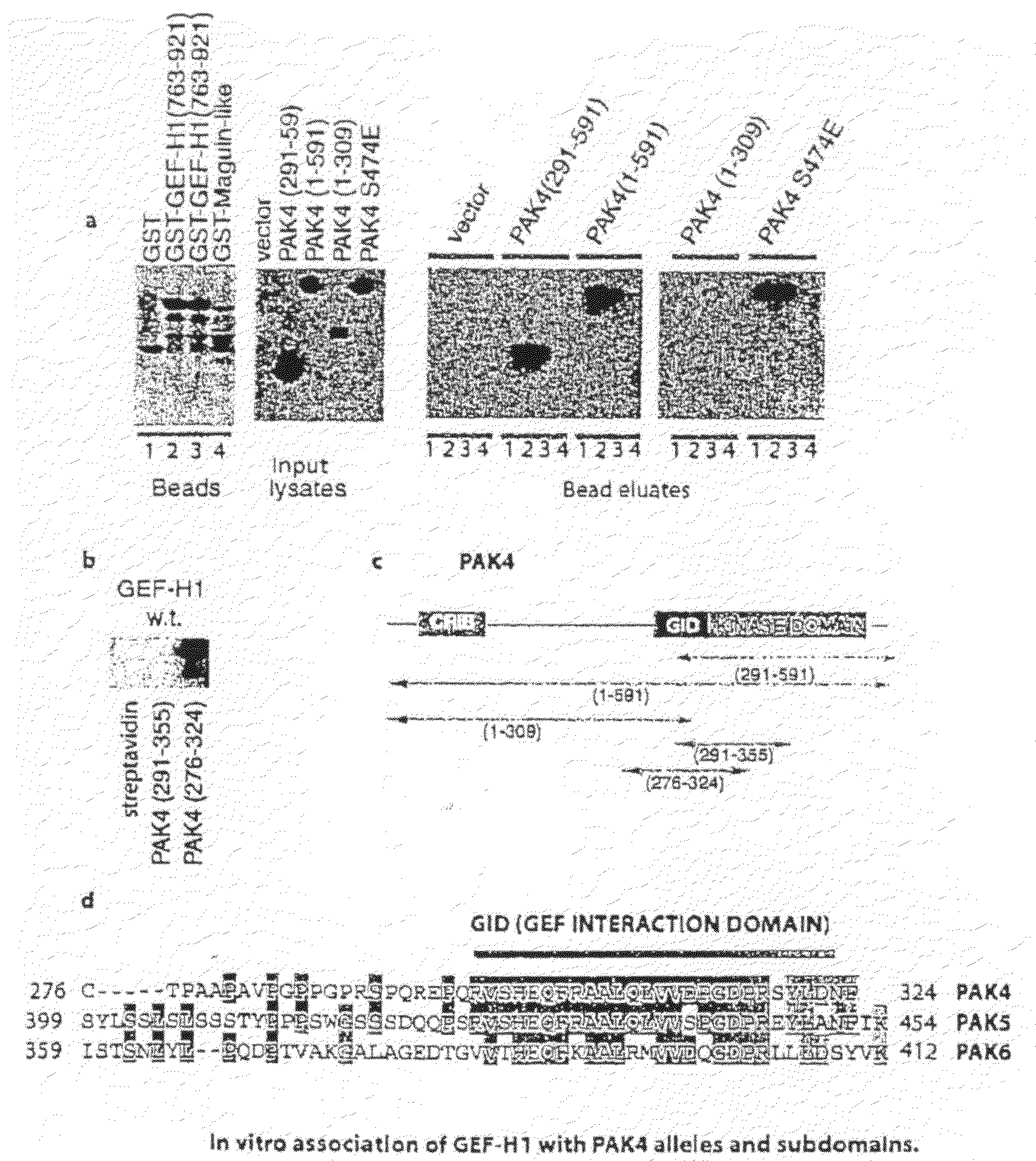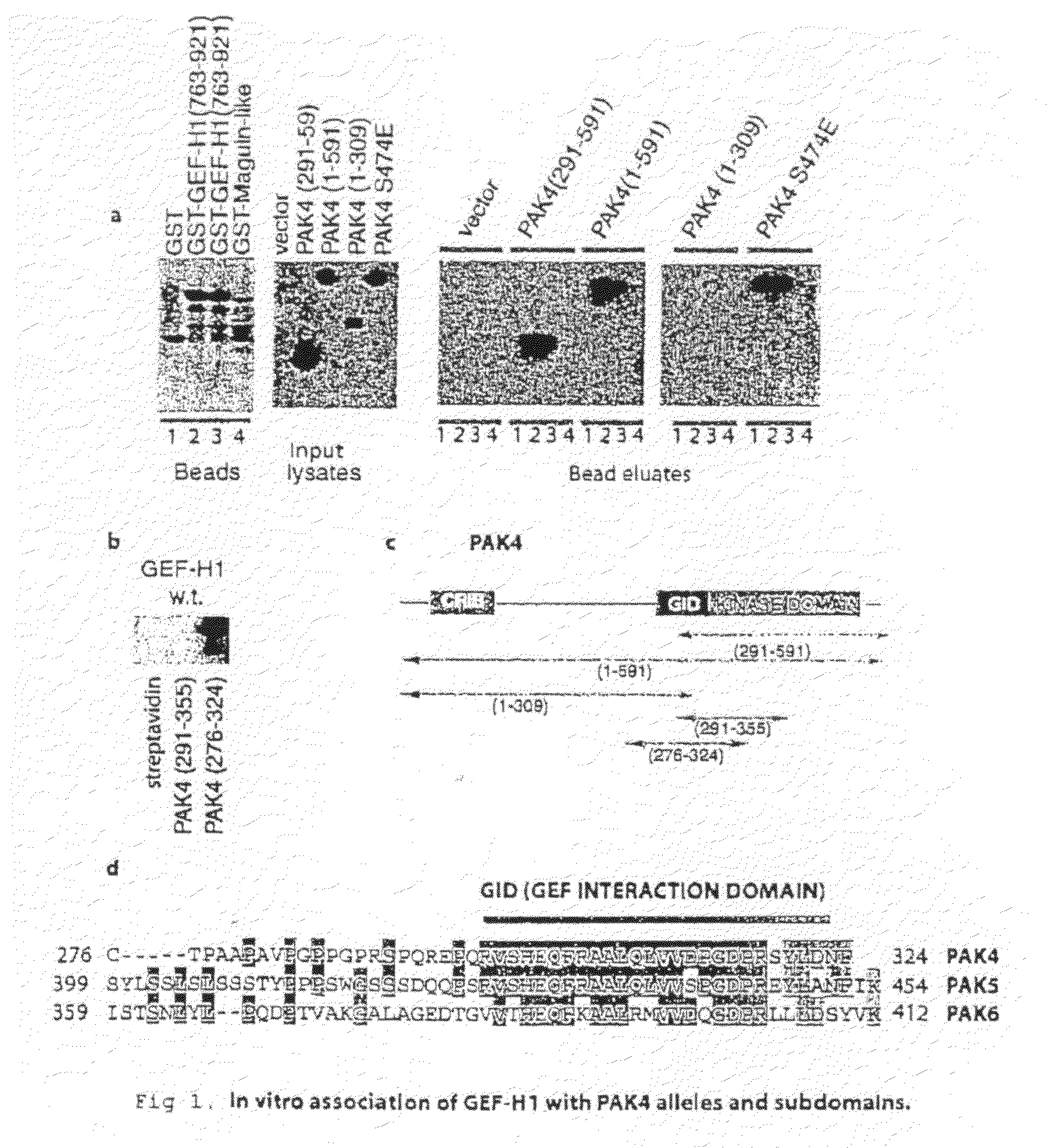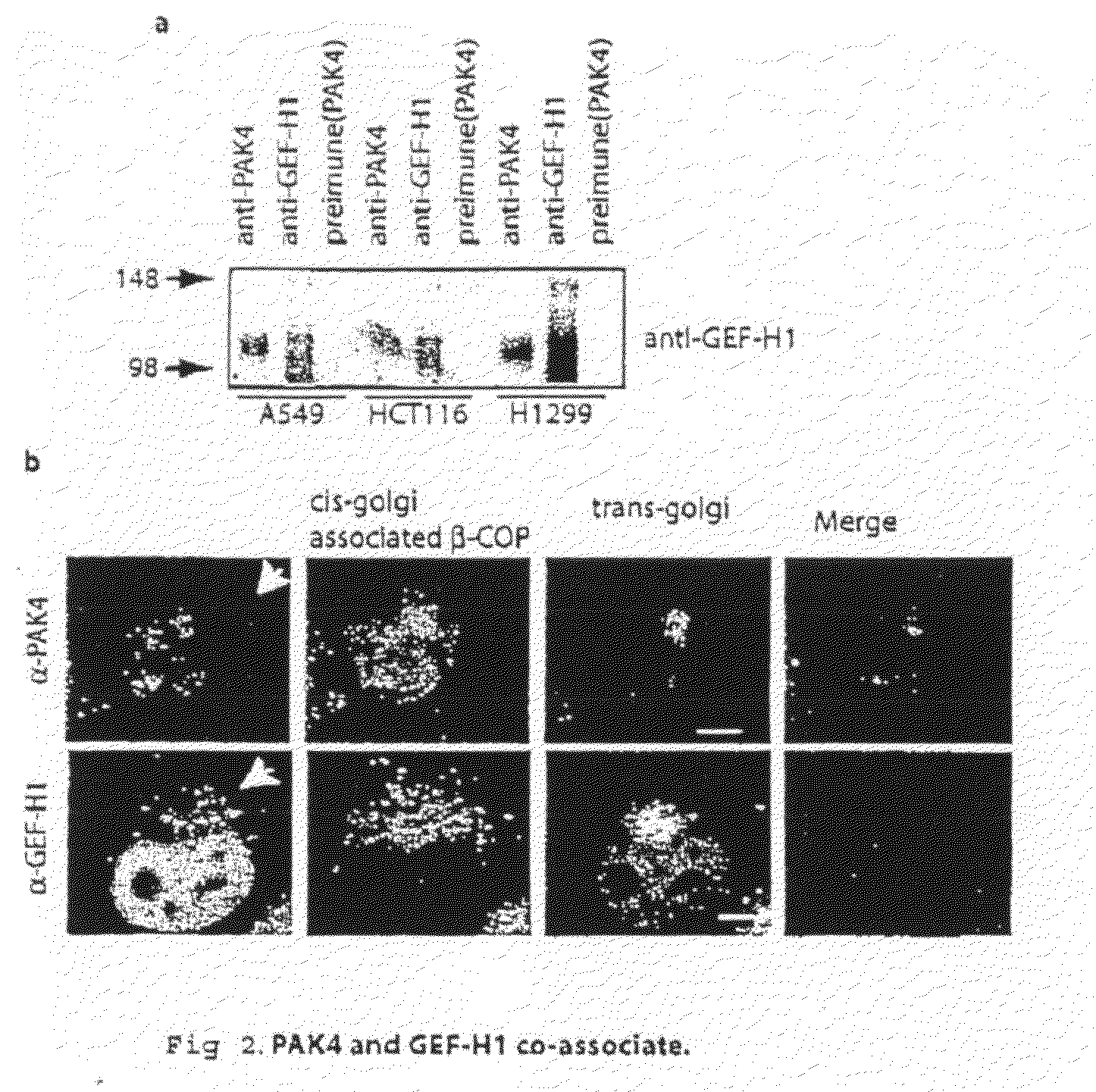GEF-H1b: biomarkers, complexes, assays and therapeutic uses thereof
a technology of gef-h1 and assays, applied in the field of gef-h1b, can solve the problems that existing techniques and current knowledge have not used nor addressed the interaction of gef-h1 with other proteins
- Summary
- Abstract
- Description
- Claims
- Application Information
AI Technical Summary
Benefits of technology
Problems solved by technology
Method used
Image
Examples
example 1
Cloning of GEF-H1S
[0165]Primers MC1 GCAGAATTCTGTMCMGAGCATCACA (SEQ ID NO.16) and MC3b GCGCTCGAGTTAGCTCTCGGAGGCTACAGCCT, (SEQ ID NO. 17) designed from Accession No. KIAA0651, deposited at the NCBI (National Center for Biotechnology Information, USA) were used in a polymerase chain reaction (PCR) to amplify the GEF-H1S gene from a human whole brain plasmid cDNA library (Clontech laboratories Cat #HL9002CC). Twenty-rounds of PCR were performed using EXPAND polymerase (Roche Molecular, USA Cat #1681834). The primer MC1 introduced an EcoR1 restriction enzyme site in the 5′ position and MC3b contains a Xho1 restriction enzyme site in the 3′ position. The sequences of the restrictions enzymes sites are not part of the native GEFH-1b sequence. The resultant PCR product was inserted into an EcoR1 and Xho1 restriction-digested plasmid vector, pcDNA (Invitrogen Cat #V790-20) backbone with a modified multiple cloning site. The GEF-H1S gene was then excised using the restriction enzymes HindIII ...
example 2
Expression and Anchorage Independent Proliferation
[0166]A stably expressing clone designated 192.58 containing GEF-H1S was established in the mouse fibroblast cell line, NIH-3T3. The pRSV / Rc subcloned vector expresses the GEF-H1S protein in tissue culture cells.
[0167]The GEF-H1S clones were plated in tissue culture vessels which prevent adherence. Cells over-expressing GEF-H1S are anchorage independent. NIH3T3 cells harboring only the vector expression vector pcDNA did not transform spontaneously when anchorage was prevented. Only the clones harboring the GEF-H1S gene were shown to survive and proliferate. Therefore, expression of GEF-H1S allows for anchorage independent survival and proliferation of NIH-3T3 cells. The ability for cells to proliferate was measured using the tetrazolium salt XTT based assay (Roche Molecular Biochemicals Cat #1465015) which measured only metabolically active cells in culture. Measurements were made over a time course.
example 3
Effect of GEF-H1S on a Mouse Tumor Model
[0168]The 192.58 cells formed tumors when transferred into athymic nude mice. Eight mice per group were injected subcutaneously with NIH-3T3 cells harboring either a control pcDNA expression vector or pcDNA expression vector expressing the GEF-H1S gene. Palpable tumors were measured in mice treated with the 192.58 cells over a time course. No palpable tumors were detected in mice implanted with cells harboring pcDNA expression vector.
PUM
| Property | Measurement | Unit |
|---|---|---|
| temperature | aaaaa | aaaaa |
| volume | aaaaa | aaaaa |
| volume | aaaaa | aaaaa |
Abstract
Description
Claims
Application Information
 Login to View More
Login to View More - R&D
- Intellectual Property
- Life Sciences
- Materials
- Tech Scout
- Unparalleled Data Quality
- Higher Quality Content
- 60% Fewer Hallucinations
Browse by: Latest US Patents, China's latest patents, Technical Efficacy Thesaurus, Application Domain, Technology Topic, Popular Technical Reports.
© 2025 PatSnap. All rights reserved.Legal|Privacy policy|Modern Slavery Act Transparency Statement|Sitemap|About US| Contact US: help@patsnap.com



